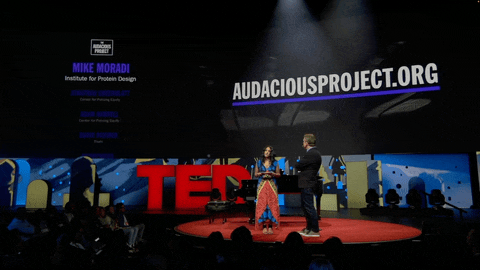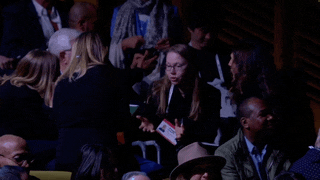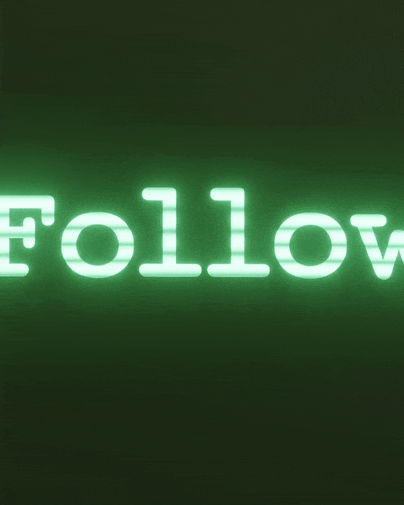What led you into design?
More than being led into it, I think I came back home to it.
As a child, I loved to sit at the kitchen table with a blank sheet of paper and draw. If I wasn't doing that I was building something with Legos. If I was creating, I was happy. But as I got older I drifted from that. At university, I pursued computer science and mechanical engineering.
After four years of engineering studies, I made a hard pivot to design and communication. I remember opening Photoshop for the first time and getting hooked. My degree is kind of a mashup of design, writing, and engineering – but design was my love. So when I graduated I spent most of the money I had left for a flight to Denver to interview at a small design and development agency. The other candidates were experienced and better qualified than me, but I got the job. I've been around design and tech ever since.
What does a typical day look like?
The gym is about 4 blocks away so I'll head there first. At least this is how the day is supposed to start. I’m lazy, so sometimes this just doesn't happen.
Every morning I make an entry in my gratitude journal. It's a simple prompt: What are you grateful for today? The entries are usually simple: Grocery delivery. Non-stick pans. Leaves turning colors. A nice thing someone said about my artwork. That kind of thing. Next, I’ll read some newsletters over a cup of coffee. I try to keep these to a minimum. Both the number of newsletter subscriptions and cups of coffee. After that, I might have a look at Elon's website to see what misinformation is trending or what Design Twitter is arguing about.
By day I lead a wonderful product design team. Business hours are a blur of meetings, slack messages, advancing projects forward, directly contributing in a tactical manner, and generally managing a set of ever-changing conditions.
The evening is a whole different vibe. Depending on my willingness to keep sitting at my workstation, I'll switch into creative mode and continue on whatever 3D illustration or animation I’m in the middle of. The creative journey of learning 3D has really sustained me over the last few years, so I try to make time for it consistently. But it's also a lot of sitting.
What's your workstation setup?
I'd love to have a nice cozy workstation like you see on Maker Stations, but this is what I have. I have a PC and a Macbook. I tolerate Windows because Blender runs much faster on a PC for 3D work. I use a Mac for everything else.
- Mac: 2022 Macbook Pro 14"
- PC: Ryzen 9 3900x CPU (air cooled by Noctua), 32GB, 2 2TB SSDs, RTX3080 GPU, NZXT H510i case
- 32" LG 4k display
- Huion 16" 4k tablet
- Stream Deck
- Keyboard: Logitech MX keys
- Mice: Magic Mouse for Mac, Steelseries Rival 3 for PC
- Camera: Sony FX30
- Steelcase Leap V2 chair
Where do you go to get inspired?
For product design, I often find inspiration from physical products. Industrial design, being a much older profession, has accumulated a lot of wisdom. Designers in tech have a lot to learn from it.
For digital art, I've been finding a lot of inspiration in film and set design. I’ll see a moment in a scene that inspires me to recreate the essence of that scene in an illustration, with my own little spin on it. It's a form of fan art, I suppose.
What product have you recently seen that made you think this is great design?
I love when a product does one thing really well and isn't tempted to be something it isn't. Things is a great example of that. I've used it since it launched in 2009. They added features over time, but never took their eye off the ball, never drifting from the central purpose. It is confident in itself. The design is as simple as possible, but no simpler (an Albert Einstein quote I steal a lot). For me, Things is still the gold standard to-do list app out there today.

One notable mention is Raycast. It's sharply designed and really performant with a sensible UI. I use it all the time.
What pieces of work are you most proud of?
Professionally, I'm proud of my contributions over 9 years with TED Talks. I mainly led the design around the video viewing experiences on digital platforms.

I'm also proud of some of the things I did during the live conference itself in Vancouver. One year I made an app that collected live responses from the audience and presented them on the stage screens in real-time.


As fun as that was, I'm more proud of the efforts we made to reach people who don't have the means to get to a TED conference. My team created and maintained platforms that distributed video content all over the world, in over 100 languages, for a wide range of devices and bandwidth considerations.
For personal stuff, I really like how this 3D animation of Neo's apartment from The Matrix turned out. You can see some of the modelling processes here.
What design challenges do you face at your company?
Designing for events. For most products, you identify a market space and devise a way to serve that market. You establish some KPIs and launch when you're good and ready. You measure, learn, iterate and repeat. My team builds app platforms for events, and that's a whole different game. Events have inflexible deadlines. There are no delays or do-overs. Everything has to work the first time.
Another challenge I face isn't about design but it's personal to me: Dealing with conflicts between business and personal values. The company I work for right now owns many companies that I personally want nothing to do with. Some I strongly object to. For example, I reject anything that exploits animals for food, profit, entertainment, testing, or human vanity. Being put in a position that contributes to things like that – even indirectly – has been almost unbearably difficult.
What music do you listen to while designing?
Any advice for ambitious designers?
If you're a product designer, I have two things.
The first is about what design even is. Most young designers try to impress with how their design looks and feels. Then they level up to realize design is how something works (one of Steve Jobs' best quotes is about that). A lot of designers stop there, and that's ok. But the best ones I know go one step further. Their designs accommodate the way the brain works. So my advice is to learn how the human mind organizes things, process information, takes shortcuts, sees what is (and isn't) there, makes predictable errors, and keeps falling for the same tricks over and over. Read people like Daniel Kahneman or Cliff Kuang.
The other piece of advice I have is to become a master of articulating exactly why your designs are the way they are. Have you ever been in a situation where you were presenting your work and were asked to explain something you were unprepared for? You probably tried to improvise a thoughtful answer right there on the spot and hoped they didn't notice. Great designers don't leave anything to chance. You can think you have the most bulletproof, thought-through design ever. But if you aren’t expressing those decisions persuasively and convincingly, then your hard work is vulnerable to reshaping by other people's opinions and whims. Tom Greever wrote a great book called Articulating Design Decisions. Worth a read.
If you're learning 3D art, I have two for you, too.
The first is to resist trying to make a complex scene or project and create small things for small, consistent wins. I see so many people flame out by trying to achieve too much at once. There's a lot to this. Give yourself permission to climb with patience. And enjoy and celebrate each new trick you learn. I promise you, the learning never ends, and if you find joy in it then the joy is ongoing too. Can't lose!
The second is about AI. Some people are running to it for the quick ROI and esteem it can bring. If that's you, great. Do you. To those that are becoming dispirited by it and question whether it's even worth investing in human creativity anymore, my advice is to keep going. If you create art for your own fulfilment, AI changes nothing. If you create art to make a living, then make things AI can't (or isn't very good at). The more specific, precise, and human your art is, the more it stands out from AI. When those chasing productivity or the prize at the end realize that AI doesn't quite get them all the way, they will turn to actual human illustrators, animators, modellers, environment artists, etc. In my opinion, AI doesn't create art. It creates art-shaped images.
Anything you want to promote or plug?
Yes, I'd love it if more people heard from those speaking on behalf of the voiceless. One of those people is animal photojournalist Jo-Ann McArthur. Check out the non-profit she founded, We Animals Media.














